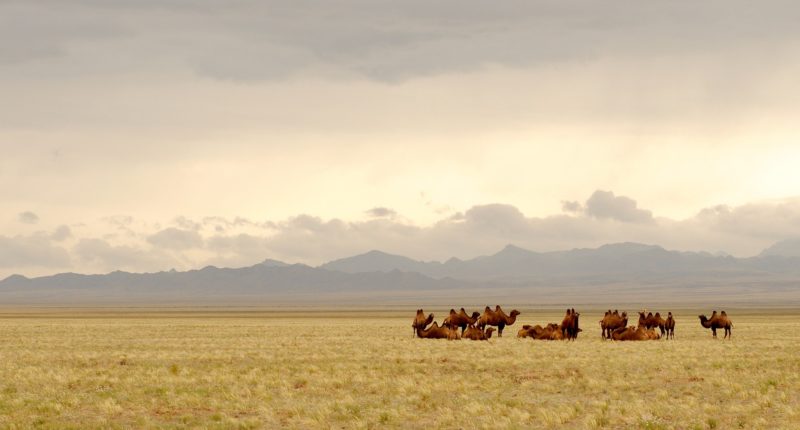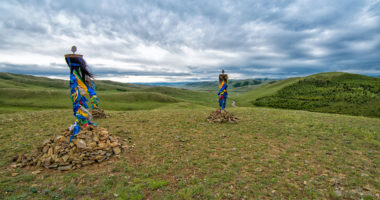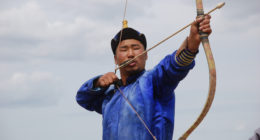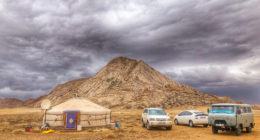Here you can find an overview of the top sectors and opportunity areas, as well as tools to help you better understand your region and a way to contact professionals directly.
| GDP by sectors | Percent of the employees | |
| Services | 49.7 | 53.6 |
| Industry | 38.2 | 19.5 |
| Agriculture | 12.1 | 26.9 |
The Mining Sector
The country is rich in large copper, gold, and coal deposits.
- The mining sector in Mongolia accounts for about 25% of the GDP.
- 71% of Gross Industrial Output
- 90% of Export Earnings.
Below mines are still expected to significantly contribute to the Mongolian GDP for another three decades in the future.
Oyu Tolgoi mine
This mine is partly owned by the Mongolian government (34%) and Turquoise Hill Resources (66%).
Tavan Tolgoi mine
Tavan Tolgoi (TT) coal project. This company is believed to have coking coal deposits of 6.4 billion that are yet to be exploited.
Erdenet mine
Erdenet Mining Corporation, State-owned enterprises is one of the biggest copper ore mining and ore processing factory in Asia.
Ukhaa Khudag, Nariin Sukhait, Tsagaan Suvarga, and other major deposits include Ukhaa Khudag, Nariin Sukhait, and Tsagaan Suvarga. Mongolia has approximately 8,000 occurrences of 80 different mineral deposits in 1170 minefields. The western portion of the nation is still undeveloped, which means there’s a lot of room for fresh resources to be discovered. The mining industry is, without a doubt, the most important sector of our economy and the foundation of Mongolian commerce and industry.
The Agricultural Sector
The sector is important to the economic and cultural heritage of the country.
- The agricultural sector accounts for more than 20% of Mongolia’s GDP
- 14% of foreign exchange revenues
- 35% of total Mongolian work force
Mongolian livestock accounted for 42.8 million head in 2018, accounting for 85 percent of the country’s overall agricultural output. Cattle, horses, camels, sheep, goats, and pigs are among the animals raised in the nation. Exports of high-value-added industrial goods based on beef, cashmere, yak hair, sheep, and camel wool have a lot of promise.
According to a recent study, roughly 60% of Mongolia’s farmed land has low nitrogen and potassium concentrations, which are simple to utilize in plants, and 34.7 percent has low phosphorus concentrations. Crop cultivation is also an important element of Mongolian agriculture. Potatoes, barley, corn, and wheat are among the crops grown. Mongolia’s organic food industry is a new and large potential market, with the sector projected to grow in the future years. The demand for organic food is expected to soar in the future years as food adulteration becomes more common. Mongolia is the finest site in the world to export organic food to China.
The Construction Industry
- The construction companies in Mongolia have employed over 70,000 people
- There is about 7500 companies works in this sector
Mongolia’s construction industry encompasses a wide range of projects, including residential flats, commercial buildings, and industrial structures. In addition, the industry expands its operations to encompass infrastructure projects like roads and railway lines. Hydroelectric power stations, solar power plants, coal-fired thermal stations, and wind power stations are all examples of power generation infrastructure that the construction sector works on. About 57 percent of Mongolia’s population lives in cities, resulting in a strong demand for housing and other associated services.
Energy
Mongolia has a great potential for exporting renewable energy throughout Northern Asia. Mongolia’s mainly untapped renewable resources may be utilized to kick-start a significant cross-border power corridor linking Russia, Mongolia, China, South Korea, and Japan, according to the International Renewable Energy Agency (“IRENA””Renewables )’s Readiness Assessment: Mongolia.” Mongolia’s Gobi Desert has a 2.6-tonne-watt renewable energy potential. Mongolia’s present renewable energy capacity is just 7%, however the government has set a target of 20% renewables by 2023 and 30% by 2030. The Green Development Policy and the Law on Energy Conservation and Efficiency were recently enacted by Mongolia’s parliament as comprehensive initiatives targeted towards future sustainability. Mongolia can now guarantee energy security and dependability thanks to the new law.
Wind Power – Wind power resources classified as Good-to-Excellent are equivalent to 1,113,300 MW of wind electric power.
Solar Energy – In most parts of Mongolia, there are around 270-300 sunny days per year with an average sunshine length of 2,250-3,300 hours. With a daily sun intensity of 4.3-4.7 kWh/m2, the annual average quantity of solar energy is 1,400 kWh/m2.
Hydro Power – In our nation, there are 3800 small and large streams and rivers that may generate up to 6417.7 MW of power and supply 56.2 billion kWh of electricity yearly.
Banking
Given the strong demand for sophisticated financial goods and services in the nation, the new Securities Law (2014) and Investment Fund Law (2013) provide significant potential high-growth possibilities for new investors in a developing advanced financial products and services business. Foreign undertakings can engage in fields such as insurance, fund management, private equity, venture capital, and new credit and lending products for high capital returns.
- 13 commercial banks
- 1 development bank
- 541 non-banking financial institutions
- 288 savings & credit cooperatives
- 70 brokerage houses
- 15 insurance companies
ING, Sumitomo Mitsui Bank, Tokyo Mitsubishi Bank, Bank of China, and Industrial and Commercial Bank of China all have representative offices in Mongolia. Commercial banks own 90-95 percent of the financial sector’s assets, according to data.
Tourism
The tourist business in Mongolia has the potential to develop due to the country’s isolation and natural beauty. Mongolia, being the birthplace of Chinggis Khaan, has a distinctive natural scenery as well as enigmatic historical and cultural artifacts. It is still one of Asia’s remaining major adventure locations. The United Nations World Tourism Organization ranks Mongolia 99th out of 140 nations. For the medium to long term, tourism has been identified as a promising industry to investigate in terms of high FDI and linkage potential. The government has taken a number of exciting steps to enhance infrastructure and promote tourism in recent years, and has set ambitious short and medium-term goals for the industry, including increasing foreign visitors in Mongolia. Boosting investments in hotels, tour camps, eco-tourism, and international tour operators are in great demand as a rising industry with significant development potential. Mongolia has earned a reputation as a key destination for outdoor and adventure sports and other related activities, such as trekking, climbing, fishing, hunting, and bird watching, among many other things, based on exotic, untouched, wonderful nature and traditional nomadic customs over the last decade.
IT Sector
With the rapid expansion of ICT total income each year, new foreign investor interest will construct higher-speed networks and build competitive networks to global markets. Mongolia’s telecommunications sector has expanded significantly since it was liberalized in the early 1990s. The industry has the potential to attract significant FDI, facilitating new activity and providing faster and better services. Subscriber growth is projected to decrease or halt in the next years due to the high mobile penetration rate. The government has assumed a leadership position in this field, announcing a series of large-scale, long-term development programs aimed at assuring consistent increases in the reach and quality of national telecommunications networks.









